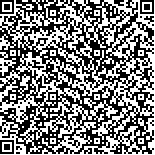| 摘要: |
| 老年人日常活动机会与其健康水平息
息相关。街道作为居民日常活动的空间载体,对
其活动能力的提升意义重大。为明晰老年人日常
活动的街道环境影响因子,提高活动出行质量,
从可行能力视角切入,将老年人日常感知的活动
机会作为因变量,街道可步行性(街道连通性、
街廓尺度、步行安全性)、生活性(设施密度及
丰富度、设施可达性)以及美学性(街道绿化、
界面连续性)三个维度特征数据作为自变量,运
用多元线性回归分析,揭示街道环境要素对活
动能力水平的作用效应及影响机制。研究发现,
不同维度街道环境要素对不同类型活动能力差
异显著,对比街道美学性环境要素,街道可步行
性、生活性要素是影响老年人活动能力的主导方
面。其中,在步行性维度,停车方式对活动能力
至关重要,整合度次之;在生活性维度,商业设
施可达性对活动能力的影响十分关键,设施种类次之,此外设施数量与休闲和医疗设施可达性对
活动能力的作用效应也不容忽视。据此,为提高老年人活动水平,选取两个典型案例提出针对性
的街道环境优化建议。 |
| 关键词: 老年人 活动可行能力 生活性 可步行性 美学性 |
| DOI:10.13791/j.cnki.hsfwest.20230106 |
| 分类号: |
| 基金项目:国家自然科学基金面上项目(52078095);国家自然科
学基金重点项目(51638003);上海市城市更新及其空
间优化技术重点实验室开放课题(2019030214) |
|
| The Influence of Street Space on the Daily Activities of the Elderly |
|
HAN Ruina,YANG Dongfeng,WEI Yue
|
| Abstract: |
| The richness of daily activities for the elderly has a positive impact on their health and
quality of life. As China’s population is aging, “active aging” has become an important policy
framework for the whole society to deal with the aging issue, and enhancing the choice of daily
activities for the elderly can contribute to the realization of active aging. The opportunities for older
people to choose their daily activities are closely related to their feasible abilities, and exploring
the complex influence of built environment on older people’s daily activities from the perspective
of feasible abilities opens up new ideas in the field of urban planning today. In addition to being a
linear pathway for the flow of elements, streets should be considered as indispensable local places
that provide the necessary environmental support for the daily activities of the elderly and have
a catalytic effect on the occurrence of their activities, which in turn affects the frequency and
distribution patterns of their trips. However, with the rapid expansion of cities, street environments
are facing many difficulties such as decreasing walkability, decreasing liveliness and low vitality,
which are the direct causes of the frequent decrease in the efficiency of street space use for the elderly
urban population whose physical activity support system is relatively weak. Therefore, specifying
the elements of street environment that affect the daily activity capacity of the elderly is conducive
to improving proactive health interventions in the built-up street environment and promoting the
construction of age-friendly streets.
The daily activity opportunities of the elderly are closely related to their health level. As the spatial
carrier of residents’ daily activities, streets are significant for their activity capacity. In order to clarify the
factors influencing the daily activities of the elderly in the street environment and improve the quality of
activity travel, this study uses the perceived daily activity opportunities of the elderly as the dependent
variable, and three dimensions of street walkability (street connectivity, street scale, pedestrian safety),
lifestyle (density and abundance of facilities, accessibility of facilities) and aesthetics (street greening,
interface continuity) as the independent variables. As independent variables, multiple linear regression
analysis was applied to reveal the effect of street environment elements on the activity level of the elderly
and the influence mechanism. In terms of data collection, through the questionnaire and structured
interview survey of the elderly in the central area of Dalian, the elderly were randomly asked about
the place and types of daily activities, so as to obtain data on older adults’ participation and perceived
opportunities in daily activities. In addition, the study collects street network and building vector data
with the help of Open Street Map, Gaode Map and ENVI5.0 software, and calculates and analyzes the
data with Depthmap and ArcGIS. With the help of SPAAAU software, The study used multiple linear
hierarchical regression to analyze the elderly activity data with street element indicators, and to identify
the key street environment elements that influence the elderly activity based on controlling for individual
attribute variables.
It was found that different dimensions of street environment elements differed significantly on
different types of mobility, comparing the aesthetic street environment elements, street walkabilityand livability elements were the dominant aspects affecting the mobility of older adults. Among them, in the walkability dimension, the parking method is
crucial to the activity ability, followed by integration; in the livability dimension, the accessibility of commercial facilities is crucial to the activity ability,
followed by the type of facilities, in addition to the number of facilities and the accessibility of leisure and medical facilities, whose effects on the activity
ability cannot be ignored.
The study selects two areas with low activity capacity of the elderly in different road network forms for the construction of targeted optimization
strategies. Only two specific examples of key matching forms in the area are selected for the study, namely the Southwest Road area dominated by free-
form road networks and the Erqi Square area dominated by mixed road networks (square grid and circular radial). The specific characteristics of each
area are fully understood, including both the morphological structure of the street network and the quality of the spatial environment, and a detailed street
environment optimization strategy to increase the activity opportunities for the elderly is proposed. |
| Key words: The Elderly Activity Capability Liveliness Walkability Aesthetics |


